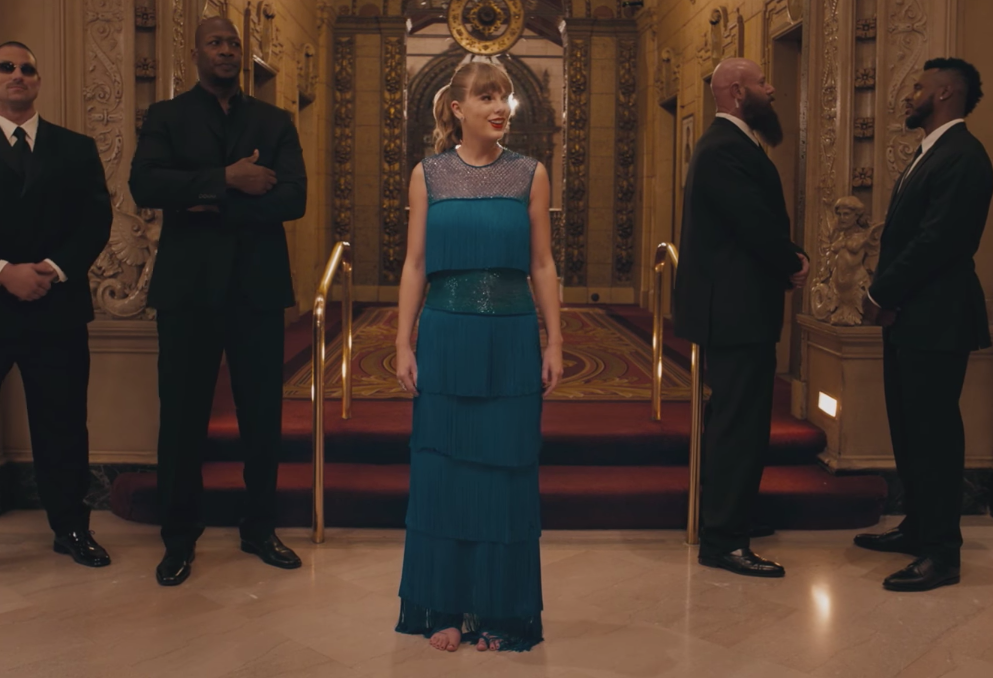
I know you all may be thinking that I mistyped the title and why I have a picture of Taylor Swift on here, but if you are a Swiftie you will understand! If you have ever listened to her song “This is Why We Can’t Have Nice Things” and even if you haven’t; the song’s first verse is all things Gatsby. The verse goes,
“It was so nice throwing big parties
Jump into the pool from the balcony
Everyone swimming in a champagne sea
And there are no rules when you show up here
Bass beat rattling the chandelier
Feeling so Gatsby for that whole year”
This verse represents the flashy party aspect of the novel, which is one of my personal favorites. In this song, and in this whole album honestly, she sings as a hopeless romantic who enjoys throwing big parties; very similarly to Gatsby. But like the novel, I believe there is a hidden interpretation she is trying to reveal. But only people who have read and analyzed the novel would understand.
This is why I think that pop culture references like this one are so important in keeping “The Great Gatsby” alive. The reason I say this is because when your favorite artist is singing about a certain character; it makes you curious and you want to understand what they are talking about. If I had never read Gatsby I would not have realized what this verse truly meant.
I think that she talks about the flashy parties and the “champagne sea” to create this facade in order to mask her true feelings and flaws. This creates a direct emotional connection to Gatsby’s flaws such as holding on to the past and loving too hard. She sings “this is why we can’t have nice things, because you ruin them” similar to Gatsby’s “nice thing” he thought he had with Daisy until it was ruined.
Along with this comparison, a few more songs in her Reputation album indicate this relation to Gatsby which I will talk about in the next post! See you then!

Swift, Taylor. “This is Why We Can’t Have Nice Things”. 2017, https://genius.com/Taylor-swift-this-is-why-we-cant-have-nice-things-lyrics. Accessed 13 September 2023.

Comments by Kynli Jones